Rising with the Sun: The Delights of Breakfast in Japan
The Essence of Japanese Breakfast

Breakfast, often hailed as the most important meal of the day, takes many forms across the globe - from toasted bread and croissant to omelets and cereal bowls. In Japan, breakfast is not just about fueling the body; it is a cultural ethos centered around well-being. Japanese people believe that eating a healthy breakfast sets the tone for a productive and fulfilling day ahead. Let's delve into the significance of breakfast in Japan, emphasizing its crucial role in starting the day with a well-balanced meal.
The Components of a Traditional Japanese Breakfast
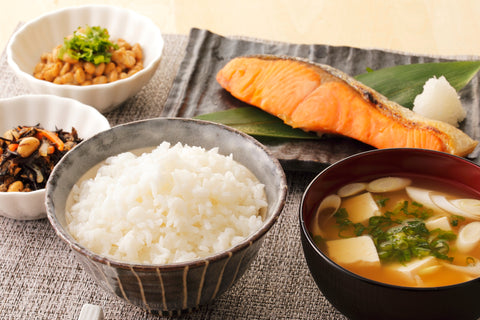
A traditional Japanese breakfast is a harmonious ensemble of healthy foods that provide a balanced and nutritious start to the day. It adheres to the Ichiju-Sansai (One Soup Three Dishes) method, which features a structured menu comprising of a serving of steamed rice, a bowl of soup, a main dish, and two side dishes. The typical components of a traditional breakfast in Japan are steamed rice, miso soup, a side of tsukemono (pickled vegetables), sheets of dried seaweed, something high in protein like grilled fish or natto (fermented soybeans), and a cup of green tea.
Miso Soup: A Warm Start to the Day

Miso soup, a traditional Japanese soup, holds a central place in the traditional Japanese breakfast, offering a spectrum of nutrients and comforting qualities that make it an indispensable component of the morning meal. Miso soup is a nutritional powerhouse, packed with vitamins (such as B vitamins and vitamin K), minerals, and antioxidants. The fermentation process of miso paste also creates probiotics that promote gut health and digestion, making it a wholesome addition to the breakfast spread.
Beyond its nutritional value, miso soup offers a sense of comfort and warmth that is deeply appreciated during breakfast. Its savory, umami-rich broth paired with tender tofu, wakame seaweed, and chopped green onions creates a soothing experience that awakens the senses and prepares the palate for the day ahead.
Rice: The Foundation of the Japanese Breakfast Table

Rice, known as "gohan" in Japanese, is an integral staple of Japanese cuisine and takes on a central role in traditional Japanese breakfast. Short-grain Japanese rice, characterized by its sticky texture and slightly sweet flavor, is meticulously washed, soaked, and then steamed in a rice cooker. This fluffy steamed rice serves as the main carbohydrate source in a Japanese breakfast, providing energy and satiety to kick-start the day.
Rice is also enjoyed in Japanese breakfasts through rice porridge, which can be served plain or adorned with toppings such as salted salmon or Japanese pickles. Another favorite rice dish is Ochazuke, a beloved Japanese comfort food, where hot green tea is poured over a bowl of cooked rice topped with an array of toppings.
Tamago Kake Gohan: Simplicity and Comfort in a Bowl
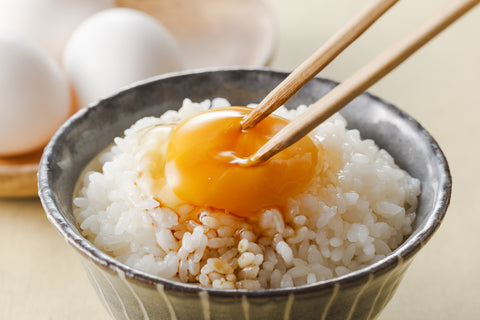
In the heart of Japanese culinary tradition lies a humble yet beloved dish that embodies simplicity, comfort, and a harmonious blend of flavors: Tamago Kake Gohan (egg over rice). It is the epitome of comfort food in Japanese culture, evoking nostalgic memories of childhood, family gatherings, and the warmth of home-cooked meals.
Preparing Tamago Kake Gohan, or TKG, is a straightforward process that requires minimal effort yet yields maximum comfort. With just three basic ingredients, TKG is an affordable breakfast alternative that can be prepared at home by anyone. To make egg over rice, start by cooking a bowl of steamed rice. Next, crack a fresh raw egg over the warm rice, gently mixing it to coat the grains evenly. Finally, drizzle a touch of soy sauce over the egg and rice mixture, adding depth of flavor and umami richness. Tamago Kake Gohan's effortless preparation, nourishing qualities, and universal appeal make it a timeless favorite across the country, reminding us that sometimes, the most delightful meals come from the simplest ingredients and heartfelt traditions.
Natto: The Polarizing Staple of Japanese Mornings
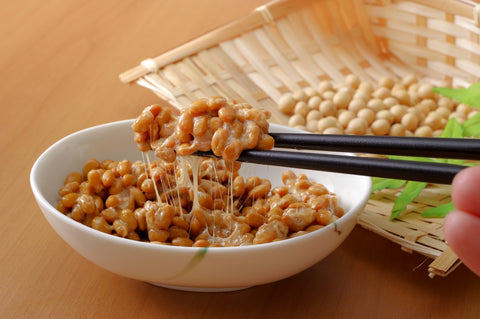
Natto is a traditional Japanese dish made from fermented soybeans widely known for its distinct flavors, convenient preparation and nutritional benefits. With roots dating back to the Edo period, the production methods and consumption practices of this fermented soybeans dish have been passed down through generations, making it a staple in Japanese breakfasts today.
Natto is a quick and simple dish to prepare, requiring minimal effort to open the packaging and mix it with condiments, making it a common inclusion in Japanese breakfasts. Whether eaten plain, paired with steamed rice, or served alongside traditional Japanese breakfast foods like miso soup, natto adds natto add a burst of flavor and texture to the meal. Despite its reputation as an acquired taste, natto is renowned for its extensive health benefits. As a fermented food, it is ich in probiotics that promote gut health and digestion. Nattokinase, the enzyme responsible for natto's sticky texture, is believed to be promote cardiovascular health. Furthermore, natto contains essential nutrients such as protein, fiber, vitamins, and minerals like iron and calcium.
The Role of Seafood in Japanese Morning Meals
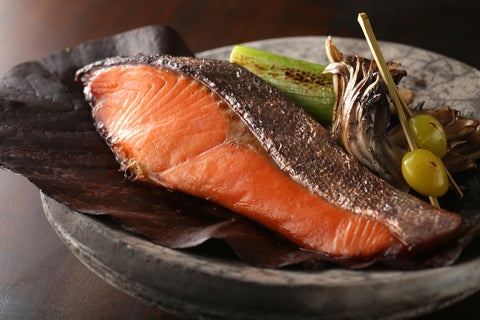
In line with Japan's rich maritime heritage, seafood plays a vital role in Japanese culinary culture. Highly valued for its outstanding nutritional content, seafood offers a wealth of essential nutrients such as protein, omega-3 fatty acids, vitamins, minerals, and healthy fats. These nutrients contribute to overall health and well-being, making seafood an indispensable component of the Japanese diet.
In a traditional Japanese breakfast, seafood adds a touch of freshness, flavor, and nutritional richness to start the day on a healthy note. Grilled fish, including mackerel, salmon, and trout, is a quintessential component of a Japanese breakfast menu. Additionally, seafood donburi, or rice bowls topped with seafood, is another popular breakfast choice in Japan. They may feature ingredients like cooked shrimp, scallops, or eel, arranged beautifully over a bed of steamed Japanese rice.
Exploring Regional Breakfast Varieties Across Japan
Japan, renowned for its rich culinary heritage and diverse flavors, offers a breakfast experience that varies from region to region, showcasing local specialties and ingredients.
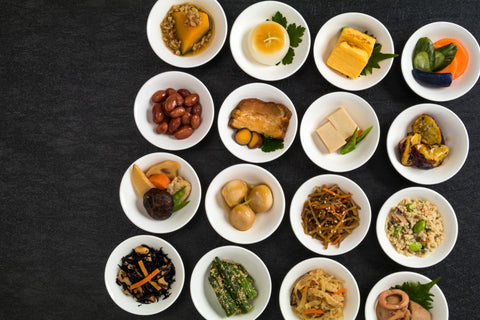
In Kansai, one of the standout features of their breakfast is the presence of obanzai, which refers to a variety of small side dishes that showcase local ingredients like deep-fried tofu and cooked vegetables. They are also renowned for their diverse array of pickled vegetables. Unlike the Kanto region, where rice porridge is often viewed as a meal for the sick, in Kansai, it is a common breakfast dish enjoyed by many.
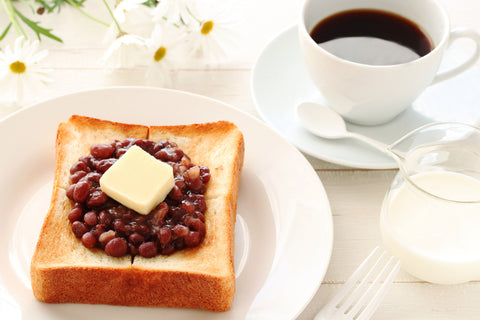
On the other hand, in the Chubu region, particularly in Nagoya, you are more likely to find Ogura (red bean paste) toast served with a cup of coffee rather than the usual traditional Japanese breakfast. This diversity further extends across Japan, with Hokkaido offering dairy products and an abundance of fresh fish, Kyushu incorporating mentaiko (spicy cod roe) into breakfast dishes, Tohoku showcasing mountain vegetables, and Shikoku featuring seasonal Japanese mushrooms. These regional ingredients are seamlessly integrated into Japanese breakfast foods, adding a distinctive flair that reflects each area's culinary traditions and local bounty.
Seasonal Ingredients in Japanese Breakfasts
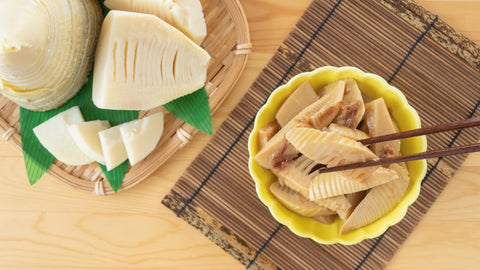
Japanese cuisine is deeply rooted in the appreciation of seasonal ingredients, with each season offering its unique flavors, colors, and textures in the morning meal. As the cherry blossoms bloom, Japanese breakfasts in spring burst with freshness with seasonal delights like takenoko (bamboo shoots), nasu (eggplant), and sayaendou (snow peas) finding their way onto the breakfast table. With the heat of summer comes a shift to lighter options like seasonal fruits, such as watermelon and melon, and citrus-marinated grilled fish, alongside cooling noodles like somen (cold noodles). As the leaves turn golden, Japanese breakfasts embrace the flavors of autumn's bounty. Japanese mushrooms like matsutake and shiitake, chestnuts, sweet potatoes, and pumpkins feature prominently in breakfast dishes. Kuri gohan (chestnut rice), simmered kabocha (winter squash), and hearty soups with root vegetables reflect the earthy and comforting tones of autumn. Winter mornings in Japan are greeted with dishes that offer warmth and nourishment. Hot bowls of okayu (rice porridge) paired with pickles or dried and seasoned seaweed, and complemented by hot drinks like hojicha (roasted green tea) or amakaze (sweet fermented rice drink), provide a cozy start to the day.
Japanese-Style Western Breakfasts: A Fusion of Flavors
Over the years, Japanese people have put their unique spin on Japanese style breakfast inspired by Western influences, resulting in delightful creations that marry the best of both culinary worlds. Here are some popular Japanese breakfast foods infused with a Western twist:

Japanese Souffle Pancake
One of the most iconic adaptions of Western breakfast fare in a Japanese breakfast is the Japanese-style pancake, referred to as "hottokeki" or "fuwafuwa (fluffy)" pancake. These pancakes are not just larger and fluffier than their Western counterparts; they are a culinary marvel, often towering high on the plate and boasting a cloud-like texture. They are typically served with whipped cream, fresh fruits, and drizzles of syrup, creating a decadent yet light breakfast treat.

Japanese Omelets
While Western omelets are folded and often filled with ingredients like cheese, vegetables, and meats, Japanese omelets, or tamagoyaki, take on a different form. Tamagoyaki is a rolled omelet made by layering thin sheets of season beaten eggs in a rectangular pan and served with soy sauce or mirin (rice wine), adding a savory-sweet dimension to Japanese breakfast.
Breakfast On-the-Go: Japan's Convenience Store Offerings
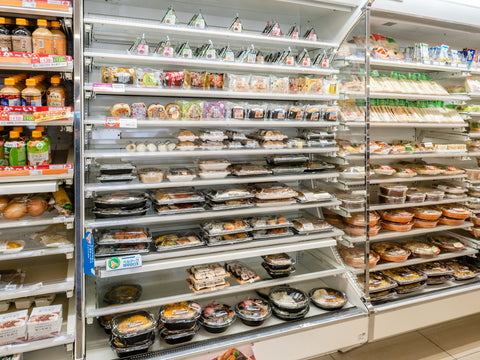
When time is of the essence and schedules are hectic, konbini, or Japanese convenience stores, redefine breakfast convenience by offering a wide range of options that cater to every taste and preference. From traditional favorites like rice balls to contemporary offerings like bento boxes, their breakfast selections combine convenience with quality, appealing to individuals who want to eat breakfast on the go.
One of the quintessential breakfast items found at Japanese convenience stores is onigiri, a rice ball usually filled with savory ingredients like gilled salmon, tuna, and pickled plum. Konbinis also offer a wide range of breakfast sandwich selections from classic egg salad sandwich to teriyaki chicken sandwich, all crafted with fresh ingredients and soft, fluffy bread. For a more substantial breakfast experience, Japanese convenience stores offer bento boxes filled with an assortment of delicacies. From Japanese breakfast sets that include grilled fish or tamagoyaki, to Western-inspired bento boxes that feature scrambled eggs or sausage, bento boxes offer a balanced meal that satisfies hunger and provide energy for the day ahead. In addition to the diverse food options, Japanese convenience stores provide an array of grab-and-go beverages like brewed coffee and bottled green tea, as well as snacks like yogurt cups and granola bars.
The Rise of Breakfast Cafés in Urban Japan

In Japan's vibrant urban landscapes, a new trend is emerging: breakfast cafes that offer a delightful fusion of traditional Japanese breakfast dishes and modern culinary innovations, all within a relaxed and inviting setting. One of the hallmarks of breakfast cafes in Japan is their dedication to serving authentic traditional breakfast dishes and at the same time showcasing their creativity though modern interpretations of these classic dishes. From Tamago Kake Gohan (egg over rice) to creative variations of French toast infused with green tea flavor, their breakfast foods cater to individuals of all ages.
DIY Japanese Breakfast: Tips for Preparing at Home

While enjoying a traditional breakfast in Japan is a delightful culinary experience, you can recreate the magic at home, wherever you are in the world. Most of the ingredients needed to prepare a traditional Japanese breakfast can be easily sourced from local supermarkets and Asian grocery stores. Here are some tips for bringing the essence of a traditional Japanese breakfast to your own kitchen:
First, gather all the essential ingredients such as Japanese rice (or brown rice for a heartier alternative), your choice of seafood or meat, an assortment of vegetables, miso soup, and traditional condiments like soy sauce and mirin (sweet rice wine). Begin by preparing the rice. Next, grill your chosen meat or seafood. For fresh fish, simply season with salt and grill until golden and flaky. As making miso soup from scratch can be time-consuming, you can opt to use instant miso soup packets. These packets streamline the preparation process while still capturing the authentic flavors of miso soup. Lastly, complement your meal with a variety of side dishes like pickled vegetables, tofu dishes, and simmered vegetables.
The Cultural Significance of Breakfast in Japan
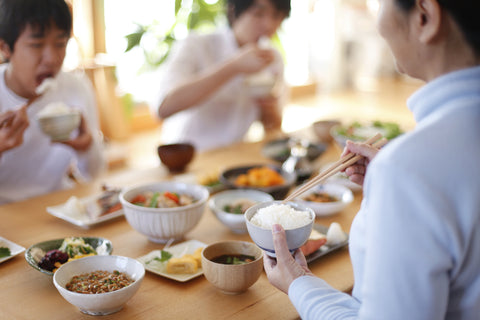
In conclusion, a traditional Japanese breakfast is not just a meal; it's a captivating journey into the heart of Japan's culinary heritage, regional diversity, and cultural values. From the simplicity of Tamago Kake Gohan (egg over rice) to the complexity of grilled fish and miso soup, each dish tells a story of tradition, craftsmanship, and mindfulness. Whether enjoyed in a traditional setting or recreated at home, a Japanese breakfast invites us to slow down, savor each bite, and embrace the essence of Japanese culinary artistry. It's a celebration of flavors, textures, and cultural nuances that transcend mere sustenance—it's a moment of connection, gratitude, and culinary delight.

Don't just eat breakfast; savor an experience. Elevate your mornings with a Japanese traditional breakfast paired with a Bokksu Snack Box subscription! Experience the authentic flavors of Japan's breakfast traditions through Bokksu's curated snacks, showcasing regional delicacies and artisanal treats.
Immerse yourself in the essence of Japanese cuisine from the comfort of home.
Author Bio







 Bokksu Snack Box
Bokksu Snack Box

























